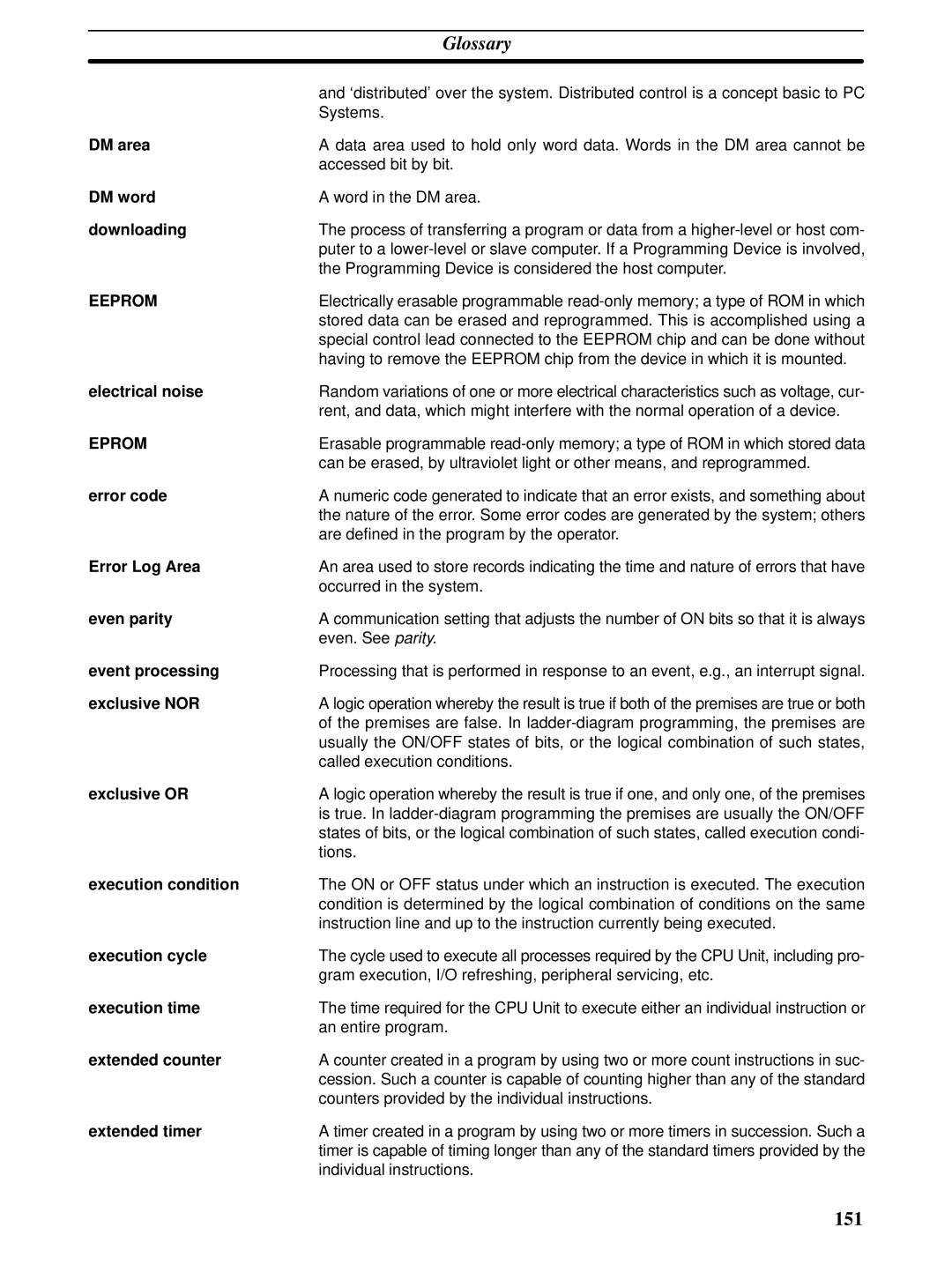| Glossary | |
|
|
|
| and ‘distributed’ over the system. Distributed control is a concept basic to PC | |
| Systems. | |
DM area | A data area used to hold only word data. Words in the DM area cannot be | |
| accessed bit by bit. | |
DM word | A word in the DM area. | |
downloading | The process of transferring a program or data from a | |
| puter to a | |
| the Programming Device is considered the host computer. | |
EEPROM | Electrically erasable programmable | |
| stored data can be erased and reprogrammed. This is accomplished using a | |
| special control lead connected to the EEPROM chip and can be done without | |
| having to remove the EEPROM chip from the device in which it is mounted. | |
electrical noise | Random variations of one or more electrical characteristics such as voltage, cur- | |
| rent, and data, which might interfere with the normal operation of a device. | |
EPROM | Erasable programmable | |
| can be erased, by ultraviolet light or other means, and reprogrammed. | |
error code | A numeric code generated to indicate that an error exists, and something about | |
| the nature of the error. Some error codes are generated by the system; others | |
| are defined in the program by the operator. | |
Error Log Area | An area used to store records indicating the time and nature of errors that have | |
| occurred in the system. | |
even parity | A communication setting that adjusts the number of ON bits so that it is always | |
| even. See parity. | |
event processing | Processing that is performed in response to an event, e.g., an interrupt signal. | |
exclusive NOR | A logic operation whereby the result is true if both of the premises are true or both | |
| of the premises are false. In | |
| usually the ON/OFF states of bits, or the logical combination of such states, | |
| called execution conditions. | |
exclusive OR | A logic operation whereby the result is true if one, and only one, of the premises | |
| is true. In | |
| states of bits, or the logical combination of such states, called execution condi- | |
| tions. | |
execution condition | The ON or OFF status under which an instruction is executed. The execution | |
| condition is determined by the logical combination of conditions on the same | |
| instruction line and up to the instruction currently being executed. | |
execution cycle | The cycle used to execute all processes required by the CPU Unit, including pro- | |
| gram execution, I/O refreshing, peripheral servicing, etc. | |
execution time | The time required for the CPU Unit to execute either an individual instruction or | |
| an entire program. | |
extended counter | A counter created in a program by using two or more count instructions in suc- | |
| cession. Such a counter is capable of counting higher than any of the standard | |
| counters provided by the individual instructions. | |
extended timer | A timer created in a program by using two or more timers in succession. Such a | |
| timer is capable of timing longer than any of the standard timers provided by the | |
| individual instructions. | |
151
